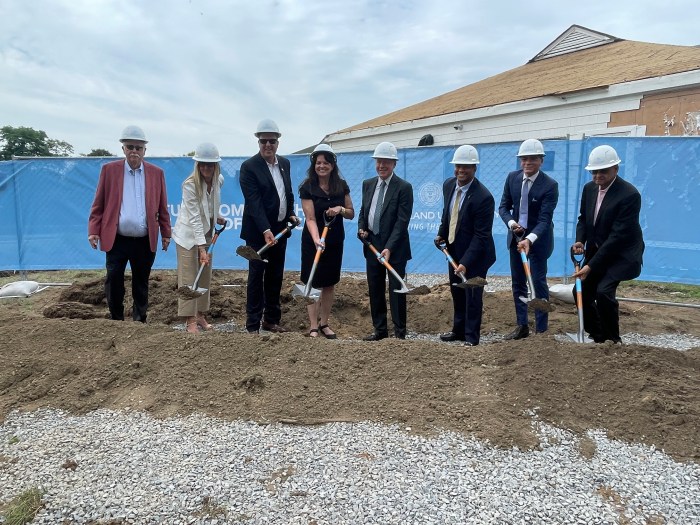The road to creating the Farmingdale Schools’ 2015-16 budget has just begun, but recent issues regarding New York State Governor Andrew Cuomo withholding vital aid numbers from schools statewide is making the district’s budget creation process a difficult one.
During a March 4 Board of Education meeting, Superintendent of Schools John Lorentz noted that the district’s budget hearings were waiting on Cuomo, who is withholding both school aid runs and the exact amounts of monetary aid to be distributed to New York schools districts until the State Legislature approves reform bills that call for more intensive teacher evaluations and other overhauls of the school system.
Without any hard numbers from the state, Lorentz said, crafting next year’s spending plan will be like playing darts in a darkened room.
“We reported to you previously that the state budget is somewhat different than it has been in the past…we have no information on state aid at this point,” Lorentz said at the meeting. “Of course, we have spoken to the PTA and other residents in regards to the Governor’s reform agenda, and it appears that other organizations have jumped on board with their opinions in regards to their disapproval of how the Governor is approaching the budget. But as of yet, we have no new information to report.”
In addition to enacting far stricter teacher evaluation guidelines than ever before–and, thus, more of the high-stakes testing that many local residents complain take away from actual classroom learning time—–—Cuomo’s reform bill would also make it more difficult for teachers to achieve and retain tenure, and would allow the state to take over school districts that care considered ‘failing.’
On March 11, Farmingdale School District’s budget season finally began with a 2015-2016 proposed budget of $157,357,708. The proposed budget maintains program opportunities for students with a 0.55 percent increase from budget-to-budget, stays within the district’s specific tax levy cap of 1.28 percent, maintains current the financial condition and continues to support capital needs throughout the district by addressing roof replacements and other needed renovations through a capital reserve fund.
Lorentz explained the state assumed control over 98 percent of all revenue that supports public education. Cuomo’s proposal includes an increase in state aid, which is contingent upon the Legislature adopting the Governor’s education reform agenda. In the reform agenda, 50 percent of teacher evaluation is based on state tests, 15 percent of evaluation is based on a local observation and 35 percent of evaluation is based on an observation performed by an observer appointed by the state.
The Governor has not provided any indication of district specific state aid packages. The statewide average increases hold little value as the annual distribution of aid can change from year to year. If the Governor’s adopted reform measures are not taken, an increase of 1.7 percent will occur, if the Governor’s adopted reform measures are taken, a 4.8 percent increase will occur. Information will not be available until the Governor and Legislature enact the 2015-16 state budget.
Using 2014-15 numbers and assuming no increase in state aid for 2015-16, the meeting concluded that the proposed 2015-16 tax levy increase is 1.28 percent ($120,787,363). The tax levy funds a school district, collects through property taxes to support academic programs and maintain district facilities. State aid is $28,080,345, other forms of revenue, which are funds necessary to support academic programs and maintain district facilities, is $2,990,000 and fund balance and reserves, which is the district savings used to offset taxes and maintain programs, is $5,500,000; this totals the $157,357,708.
If voters of the district fail to approve the school district budget, the district is required by law to operate under a contingent budget. The 2015-16 proposed contingent budget is $155,835,487. In the event of a defeated budget, reductions may include increased class size at the elementary level, reduced elective opportunities at the secondary level, reduction in athletic teams, reduction in musical performing groups, reduction in extra-curricular activities, reductions in equipment, reductions in maintenance projects, and reductions in support services.
The next budget meeting is on Wednesday, March 18 from 6 to 9 p.m.


































